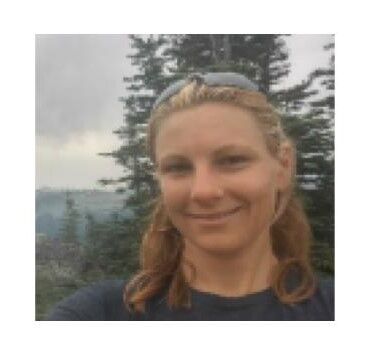Both natural and man-made contaminants find their way into waterways and ecosystems throughout the Colorado Plateau. This week, Science Moab talks to Jonathan Credo, an MD-PhD student at the University of Arizona College of Medicine, and Amy Chandos, a senior research technician at Northern Arizona University, about the impact of human-caused contamination on tribal communities, nonnative communities and on regional ecosystems.
Science Moab: What kinds of contaminants do you study?
Credo: In southern Utah, there’s a lot of agriculture, so contaminants could be runoff from farms or livestock. These aren’t necessarily intentional or malicious; we’re only recently understanding how chemicals make their way through groundwater and soils. Another significant source of contamination is the long history of heavy metal mining in the Southwest. The Navajo Nation is infamous for its long history of uranium mining. But even before uranium mining picked up, this region had been mined for things like vanadium, molybdenum, and other precious heavy metals.
Science Moab: How do these pathways of human exposure happen?
Credo: One way is exposure through ingestion, so things that people eat, drink, or inhale. But then we need to break it down. We need to understand where the contaminants are stored. Mining can contribute to both those latter pathways. As you dig into the earth, you have the potential to contaminate the groundwater system, or even spill into surface water. As for inhalation exposure, if you’re digging in a dusty environment, you’re going to have to move the dirt you displaced. While that dirt might not have the resources you’re after, it can certainly be enriched by other contaminants, like arsenic and manganese.
Science Moab: Once these things enter the system, how long are effects felt?
Chandos: It depends on the chemical element. A lot of hydrophilic contaminants can be transient as long as the source goes away, but if there’s a continual source, then there’s going to be continual exposure.
Credo: I think effects are much longer than a lot of people realize. The Gold King Mine spill is an excellent example; there’s a rather infamous photo of the river dyed gold, but within a week or month, the water went back to roughly the previous color. If you look at just that system and have a relatively narrow scope, then water contaminants do tend to cycle out fairly quickly. But the governing thought now is that contaminants likely accumulate in reservoirs downstream, almost like drip coffee. That can be scary for the communities that live downriver.
Science Moab: Could you break down the distribution of contaminants on the Plateau?
Credo: The short answer is that we’re not sure. We certainly see a higher incidence of certain cancers and chronic health diseases in tribal people on the Colorado Plateau. But this is a common problem with contamination science: is this because of the toxic environment they live in, or because of other health disparities? It’s hard to suss out those variables. But the fact that this is unknown should not be an excuse not to study it; the fact that these studies are difficult should not be a reason to not look into it.
Chandos: Sometimes scientists have difficulty working with the tribes and minority groups. There can be a lot of distrust because scientists in the past haven’t always operated with the best interests of these people in mind. They definitely have not always been culturally sensitive. That has not helped data gathering and information dissemination, either.
Science Moab: What things can start to address these environmental exposures on the Plateau?
Credo: One message is not to get discouraged. Most scientists are more than happy to talk with the community. Without community buy-in, our research is just going to rot away in a publication or on someone’s shelf. If the community becomes educated and involved, then they can make their voices known among local representatives. On the long-term scale, you can achieve larger policy changes.
Chandos: That legislation has also allowed for the cleanup of many contamination sources, including mines, mine tailings, and environmental spills, like the Gold King Mine spill. These cleanups are aiming to help the ecosystem and animals thrive in this environment that is heavily influenced by people.
Science Moab is a nonprofit dedicated to engaging community members and visitors with the science happening in Southeast Utah and the Colorado Plateau. To learn more and listen to the rest of Jonathan Credo and Amy Chandos’s interview, visit www.sciencemoab.org/radio. This interview has been edited for clarity.




